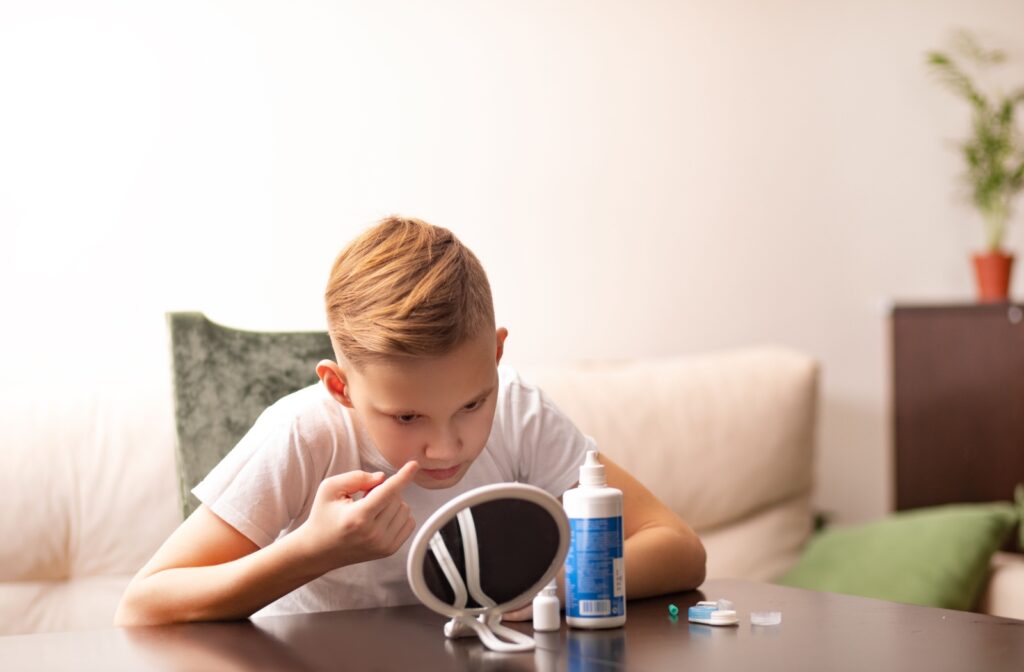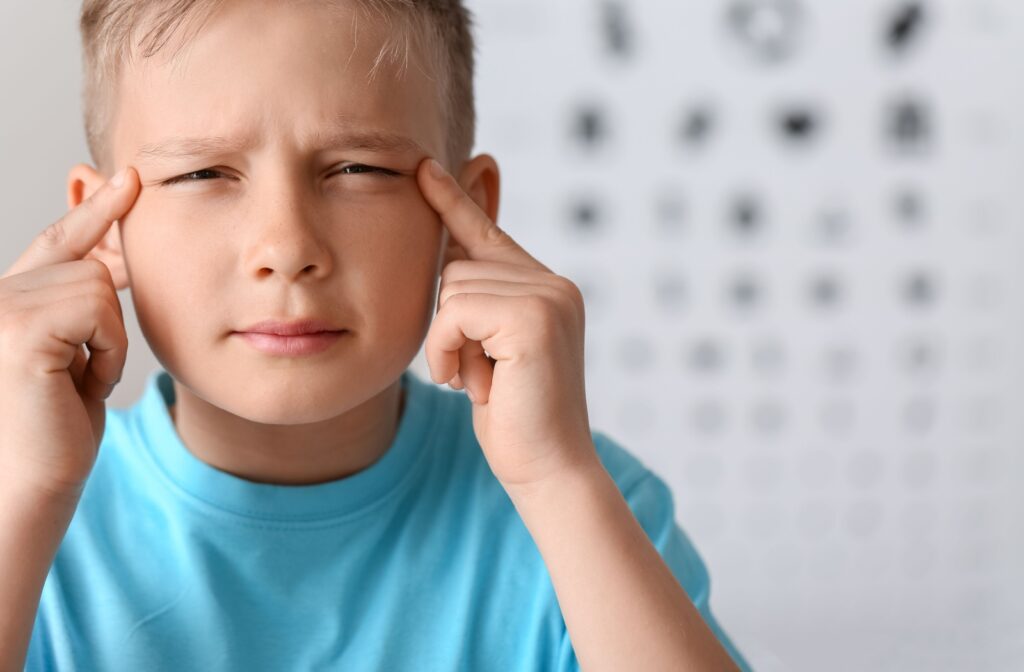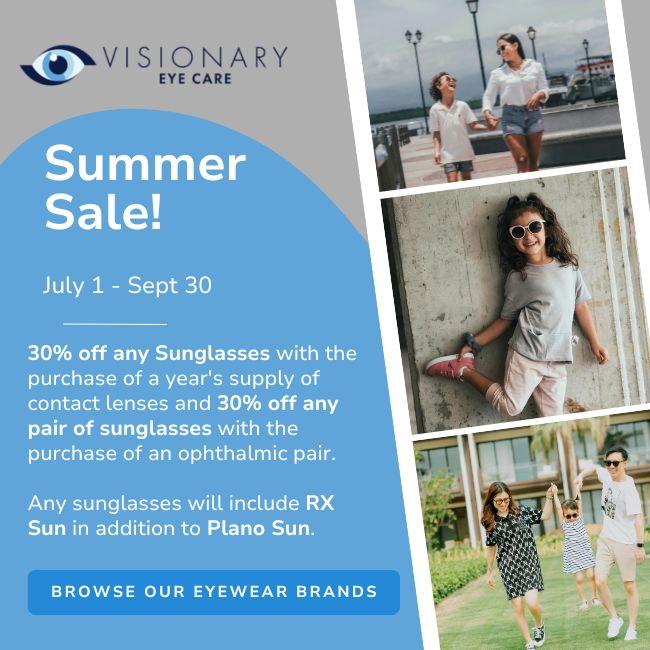As a parent, watching your child struggle to see the board at school or squint at distant objects can be concerning. Myopia, commonly known as nearsightedness, affects millions of children worldwide and has been steadily increasing over the past few decades.
Genetics, environmental factors, and lifestyle factors can all cause myopia to worsen. But understanding these influences can help you take proactive steps to protect your child’s vision. And the good news is that myopia progression isn’t always inevitable.
By recognizing the factors that contribute to worsening nearsightedness and implementing effective myopia control strategies, you can help slow its advancement and preserve your child’s long-term eye health.
What Is Myopia?
Myopia occurs when the eye grows too long or the cornea becomes too curved, causing light to focus in front of the retina instead of directly on it. This change in focus results in blurry distance vision while close-up objects typically remain clear.
Children with myopia often experience difficulty seeing the whiteboard at school, recognizing faces from across the room, or participating in sports that require good distance vision. The condition typically develops during the school-age years and can progress throughout childhood and adolescence.
What makes myopia particularly concerning is its potential for progression. Myopia often worsens over time, especially during periods of rapid growth. Higher levels of myopia increase the risk of serious eye complications later in life, including retinal detachment and glaucoma.
What Makes Myopia Worse?
Several interconnected factors contribute to myopia progression in children.
Genetic Factors
Family history plays a role in a child’s myopia development and progression. If a child’s parent or parents have myopia, they’re at a higher risk of developing myopia.
While you can’t change your child’s genetic predisposition, being aware of this increased risk allows for earlier detection and more proactive management. Children with a family history of myopia benefit from regular eye examinations starting at an early age, even before symptoms become apparent.
Environmental Factors
Environmental influences can also impact myopia development and progression.
Near Work
The modern digital lifestyle presents unique challenges for children’s eye health. Tablets, smartphones, and computers often hold children’s attention for hours, creating sustained near-vision demands that can accelerate myopia progression.
But it’s not just the amount of near work that matters. How children engage in these activities also plays a crucial role. Poor lighting, inadequate working distances, and lack of breaks can intensify the eye-straining effects of close-up tasks.
Outdoor Activities
Research consistently shows that spending time outdoors has a protective effect against myopia development and progression. Children who spend two hours or more outside daily can reduce their risk of myopia and slow progression if the condition does develop.
Bright outdoor light stimulates the release of dopamine in the retina, which appears to slow eye growth. Additionally, outdoor activities naturally encourage distance vision and reduce the sustained near-focus that promotes myopia progression.

Managing Myopia Progression
Early intervention and consistent management can significantly slow myopia progression, preserving your child’s vision and reducing their risk of future complications.
Regular Eye Exams
Comprehensive eye examinations form the foundation of effective myopia management. Regular eye exams allow your eye doctor to track changes in your child’s prescription and identify progression patterns early.
During these visits, your eye doctor can measure your child’s prescription strength and the length of their eyes. This additional information helps predict progression rates and guide treatment decisions.
Children with rapidly progressing myopia may benefit from more frequent monitoring and earlier intervention.
Many children adapt to gradual vision changes and may not realize they’re having difficulty seeing. Regular examinations can catch these changes before they impact your child’s academic performance or quality of life.
Myopia Control Options We Offer
At Visionary Eye Care, we offer a range of evidence-based treatment options to help manage and slow the progression of your child’s myopia:
- MiSight® Contact Lenses: These soft, daily disposable lenses are FDA-approved for myopia control in children. They are specifically designed to both correct vision and slow the elongation of the eye that causes myopia to worsen over time.
- Multifocal Contact Lenses: These lenses provide clear vision at various distances while also helping to reduce the visual strain associated with prolonged near work. They can be a great option for active children who prefer not to wear glasses.
- Multifocal or Bifocal Spectacles: These specially designed eyeglasses offer different prescription powers within a single lens, reducing the focusing effort required during near tasks, an important factor in slowing myopia progression for some children.
- HOYA Sync Lenses: These Sync lenses are designed to support your child’s eyes as they shift focus between distances. They come in three different levels, helping reduce eye strain and support visual comfort during both distance and near tasks.
Our team will work with you to determine which option best suits your child’s needs, lifestyle, and visual demands.
Supporting Your Child’s Vision Journey
Remember that every child’s myopia journey is unique. What works well for one child may need adjustment for another. Stay engaged with your child’s optometrist, ask questions, and advocate for your child’s visual needs. If you’re ready to take the next step in protecting your child’s vision, contact our team at Visionary Eye Care today and schedule a comprehensive eye examination to discuss myopia management strategies with Dr. Metzger, Dr. Gates, or Dr. Fosse. Together, we can work toward preserving your child’s clear sight and supporting their visual development throughout these critical growing years



